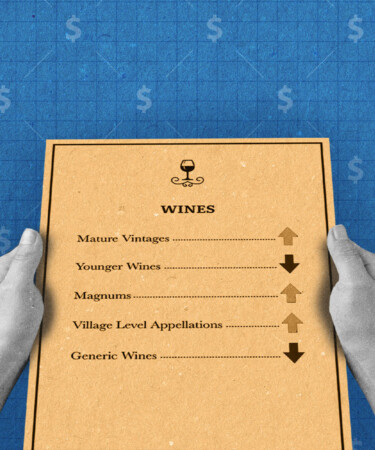There’s a practical reason why restaurants upsell wines. Persuading guests to purchase a wine bottle with a higher price point fortifies a venue’s bottom line, and a good night can theoretically add an extra blade to its razor-thin margins. Ensuring that good nights happen consistently requires a solid strategy built on customer engagement and sensible suggestions inspired by intuition while remaining aligned with a guest’s interests. It’s an inherently flexible strategy that jettisons the notion that sommeliers merely strive to move specific pricey labels during the upselling process.
At the same time, a somm’s knowledge of what does and doesn’t work within the context of a specific upselling opportunity does provide a framework for common upselling pathways to emerge. To learn more about this strategy and its complexity, VinePair spoke with Aviram Turgeman, sommelier and beverage director at Monterey in Midtown Manhattan.
According to Turgeman, upselling has little to do with a specific variety. Rather, the process focuses on other elements that can impact the wine’s depth of flavor and complexity. “The most common upsells go from a younger vintage to a more mature vintage, or from a generic appellation like a Bourgogne to a village level,” he says. Another common upsell takes volume into consideration, in the form of guiding dining parties from a smaller bottle to a larger-format option.
While upselling can be an important part of the dining experience, Turgeman doesn’t necessarily care for the term. He feels it shifts focus away from the guest experience — which, at restaurants with high-quality wine programs, must remain at the crux of any suggestion involving a move to a higher-priced wine. Turgeman notes that keeping guests as the primary focus in an upselling situation requires a somm to utilize a different skill set other than the ability to rattle off varieties and appellations. This involves paying close attention to each patron at the table and adjusting recommendations based on observation.
“I would try to read the guests first and take it from there,” he says. “Sometimes I would just offer exactly what they were interested in, and sometimes I’ll convince them to let me take them in a different direction. It really depends on the crowd, their interests, and how comfortable they are to get out of their comfort zone.”
Because upselling a wine invariably evokes conversations about the suggested bottle, the process organically lends itself to educational opportunities. On paper, this could enable a somm to get their geek on and effortlessly throw out facts, figures, and historic tidbits. However, Turgeman says restraint is an important part of the process. “We try to see eye to eye with our guests,” he explains. “When we have these conversations, we want to have them without seeming pretentious.”
Of course, having a solid wine list at a somm’s disposal helps when the opportunity to upsell presents itself. Turgeman’s carefully curated list emphasizes more mature vintages, and he feels the provenance of the bottles and his team’s ability to deftly explain the elements that make them noteworthy eases the upselling process. He also points out that these elements can foster a connection between a restaurant and guest that further enhances the dining experience. While upselling can boost a restaurant’s profit margins by a few dollars, the connections it can create are more than just an added bonus. “People trust us to guide them, and that’s important,” Turgeman says. “The process is really about the art of hearing the guests beyond their words.”
